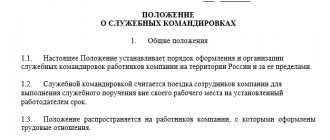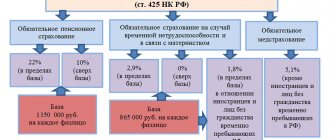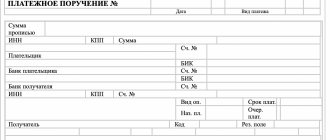What is the indexation coefficient for benefits for 2021 established by the Government of the Russian Federation? It is no secret that the size of social benefits established for certain groups of citizens in the next year depends on the value of this indicator. The fact is that in order to compensate for losses from inflation, current legislation provides for a special mechanism to counter the depreciation of payments. Therefore, the new indexation coefficient for 2021 is designed to minimize the damage from inflationary processes. It applies from 1 February 2021.
Increase in wages in commercial organizations in 2021. Indexation terms
The deadlines are established in the collective agreement with the employee. This is usually February 1, since by this time Rosstat announces official inflation for the previous year.
But that could be another day. For example, January 1 or March 1.
If indexation starts on February 1, then workers should receive an increased salary for February. And they will receive such a salary until February 1 of the next year, when the next indexation occurs.
Try calculating your salary in the Simplified 24/7 .
It allows you to maintain tax and accounting records and prepares primary documents and reporting in one click. Take a trial access to the program for 30 days. Consultation on all accounting issues is available to users 24 hours a day, 7 days a week.
Benefits from February 1, 2021: new amounts
| Title of the manual | Payment amount, rub. | |
| from January 1, 2021 | from February 1, 2021 (+2.5%) | |
| Maternity benefits (maternity benefits) | ||
| working women (in the most general case) | 100% of the average daily earnings for each day of sick leave for pregnancy and childbirth (in 2021, to calculate the average earnings, income accrued to the employee in 2021 and 2021 is taken) | |
| for working women minimum (calculated for each day of sick leave according to the minimum wage) | 43615.65 - in the usual case for 140 days of sick leave; | |
| 48600.30 - for complicated childbirth (156 days of sick leave); | ||
| 60438.83 - for multiple pregnancy (194 days of maternity leave) | ||
| for working women maximum (set based on the maximum amount of the insurance base) | 282106.70 - in 140 days; | |
| 314347.47 - in 156 days; | ||
| 390919.29 - in 194 days | ||
| unemployed women dismissed due to the liquidation of the organization (paid by the Social Security authorities) | 613.14 for 1 month of sick leave | 628.47 per 1 month |
| women studying full-time | in the amount of the scholarship established by the educational organization (regardless of whether the training is paid or free of charge) | |
| women doing military service under contract | in the amount of salary established at the place of service | |
| One-time benefits | ||
| Benefits for women registered in the early stages of pregnancy (up to 12 weeks) | 613.14 | 628.47 |
| Benefit for the pregnant wife of a conscript soldier | 25892.45 | 26539.76 |
| Child birth benefit in 2021 | 16350.33 | 16759.09 |
| Benefits for a child placed in a family for upbringing (adoption, guardianship and trusteeship, foster family) | 16350.33 or | 16759.09 or |
| 124929,83 * | 128053,08 * | |
| * Note: a higher amount is established when adopting a disabled child, as well as a child over 7 years old or several children who are each other’s brothers and (or) sisters | ||
| Maternity capital in 2021 | 453026 (does not increase from 01/01/2016 to 01/01/2020) | |
| Monthly benefits | ||
| Child care allowance up to 1.5 years old | 40% of the average monthly earnings (for the calculation of which in 2018, income for the previous two full years is taken - 2016 and 2017), but not less than the minimum established by law (which is paid, including to unemployed citizens, through Social Security): | |
| 3065.69 - for the first child; | 3142.33 - for the first (3788.33 rubles minimum for those working at the minimum wage); | |
| 6131.37 - for the second, third and subsequent | 6284.65 - for the second and each subsequent | |
| Monthly payment at the birth of the first or second child up to 1.5 years from 2021 | Regional cost of living per child for the 2nd quarter of 2017 (depending on the region - from 8247 to 22222 rubles) | |
| Allowance for the child of a conscript serving | 11096.76 | 11374.18 |
| Survivor's benefit for a child of a military personnel | 2231.85 | 2287.65 |
| Monthly payment up to 3 years for each child living in the Chernobyl zone | 3162.00 - from birth to 1.5 years; | 3241.05 – from 0 to 1.5 years |
| 6324.00 - per child aged 1.5 to 3 years | 6482.10 – from 1.5 to 3 years | |
| Monthly payment for a third child under 3 years of age | In the amount of one subsistence minimum per child established in the region | |
| Child benefit up to 18 years of age in 2021 for low-income families | Installed in all regions of the country in accordance with Art. 16 of Law No. 81-FZ of May 19, 1995 and is paid monthly or quarterly. The amount of the benefit, the timing and frequency of its indexation are established by regional laws based on budget capabilities |
Read also
30.12.2017
Increase in wages in commercial organizations in 2021. Which payments should be indexed?
The company has the right to prescribe that it indexes only salaries (letter of Rostrud dated 04/19/2010 No. 1073-6-1). Companies already calculate most additional payments (for night time, weekends, etc.) as a percentage of the salary, so these payments will also increase after indexation.
Some firms believe that they can refuse indexation of salaries if they pay bonuses. But this is a misconception for which the company will be fined (decision of the Sverdlovsk Regional Court dated April 19, 2017 No. 72-481/2017). After all, paying premiums is a right, and indexation is an obligation.
Table of indexed child benefits
The state financially supports the mother and baby even after the pregnancy is happily resolved and the newborn is born.
To understand how the amount of child benefits has changed, take a look at the table of indexation of child benefits in 2021:
Indexation is not applied to the maximum amount of child care benefits, since it is not set in a fixed amount, but is calculated based on the maximum amount of the insurance base.
At the same time, Law No. 255-FZ (Article 11.2, Article 14) prohibits the payment of child care benefits:
- below the values indicated in the table;
- below the value equal to 40% × minimum wage.
Since the amount of child care benefits calculated on the basis of the minimum wage as of 02/01/2018 is 3,795.6 rubles. (RUB 9,489 × 40%), the payment cannot be lower than this amount (if parental leave began on 02/01/2018 or later).
For a detailed table with the amounts of minimum child benefits for 2007–2018, see this article.
The amount of benefits paid depends on the date indicated on the birth certificate.
Example
In January 2021, 2 women in labor were admitted to the maternity ward: Sviridova O.R. and Sorokina N.N. The women gave birth to their first children almost simultaneously:
- Sviridova O. R. - at 23:15 01/31/2018;
- Sorokina N.N. - at 00:10 02/01/2018.
These dates appear on the children's birth certificates. Despite the fact that the time difference was not even an hour, the minimum amount of a one-time benefit for the birth of a child will be:
- for Sviridova O.R. - 16,350.33 rubles;
- for Sorokina N.N. - 16,759.09 rubles.
And there will be no difference in the amount of the minimum child care benefit for these women - their care leave will begin after 02/01/2018 and they will both receive the same indexed benefit amount.
Increase in wages in commercial organizations in 2021. Indexing procedure and documents
The indexation procedure must be established by the employer himself in a collective agreement, agreement, or local regulatory act - see examples below.
Wording on salary indexation in the collective agreement
Write down the indexation clause in the contract: The employer undertakes to index wages in accordance with the current legislation of the Russian Federation on the basis of data from the State Statistics Committee of Russia on the consumer price index. The employer undertakes to index wages at least once a quarter.
Wording on wage indexation in the wage regulations
Write down the indexation clause in the contract: The Employee’s salary is indexed in connection with the increase in consumer prices for goods and services. At the end of each quarter, the Employer increases employee salaries in accordance with the consumer price growth index, determined based on Rosstat data. Salary, taking into account indexation, is paid to the Employee starting from the first month of each quarter.
Indexation of FSS benefits for expectant mothers
In caring for women’s health and the health of unborn children, the state encourages women to contact a medical institution as early as possible for qualified pregnancy support. For this purpose, a benefit is provided for early registration.
This benefit (law No. 81-FZ):
- is of a one-time nature;
- paid if a woman registers her pregnancy early (up to 12 weeks);
- from February 2021 it is 628 rubles. 47 kopecks (a woman will receive a benefit in this amount if the insured event (pregnancy and childbirth) occurred on 02/01/2018 and later - FSS letter dated 02/13/2018 No. 02-09-14/17-04-561).
Indexation of FSS benefits in 2021 made it possible to increase the amount of this payment by 15 rubles. 35 kopecks (from RUB 613.14).
Women can receive this payment:
- those who are in an employment relationship with an employer who pays social security contributions;
- dismissed during the liquidation of a company or individual entrepreneur within 12 months preceding the day of their official recognition as unemployed;
- students studying in educational institutions;
- undergoing military or government service.
Do not forget about one important condition for payment of benefits - it will be given only if the woman applies for it no later than 6 months after the end of maternity leave.
Results
Since February 2021, various types of benefits, payments and compensations have been indexed: one-time benefits (at the birth of children, when registering in the early stages of pregnancy), monthly benefits (for child care), etc. The indexation coefficient is 1.025.
The next indexation of these benefits is provided for by law in a year (February 2021). You can find more complete information on the topic in ConsultantPlus. Free trial access to the system for 2 days.
Indexation of average earnings
Sickness, maternity and child benefits are usually calculated from average earnings for the billing period, that is, for the two years preceding the onset of illness, maternity leave or vacation (from January 1 to December 31). Accordingly, if an employee fell ill in 2017, then the calculation period will be 2015 and 2021.
If the insured event (illness, maternity leave or parental leave) occurred after July 1, 2021, then the minimum earnings for the billing period will be 187,200 rubles. (RUB 7,800 × 24 months).
Accordingly, from July 1, 2021, the minimum average daily earnings is 256.44 rubles per day (187,200 rubles / 730 days). From July 1, 2021, the average daily earnings for calculating benefits cannot be less than this value. This value must be taken into account in particular if:
- there was no income in the billing period or it was very small;
- The employee's length of service is less than 6 months;
- there was a violation of the “hospital” regime;
You can learn more about the application of the new value from the article “Benefits from July 1, 2021: new sizes.” NOT FILLED YET
February change in social benefits for funerals and summary indexation table
The indexation of social benefits for 2021 also affected cash payments for funerals. From 02/01/2018, the amount of such benefit was 5,701 rubles. 31 kopecks (5,562.25 × 1.025).
Like other benefits we have considered, the indexation coefficient is 1.025, and the date of application of the indexed benefit amount is 02/01/2018.
The following publications will introduce you to the mechanism for calculating benefits:
- “Unemployment benefits - calculation procedure”;
- "Survivor's benefit - calculation procedure".
The procedure for indexing salary
The indicator that will be taken as the basis for calculating the wage increase coefficient in 2021 is set by the head of the organization. In doing so, it can rely on the following values:
- living wage;
- inflation rate;
- consumer price index or other data.
The employer has the right to provide for the procedure for indexing wages:
- collective agreement;
- internal labor regulations;
- other local acts.
This paragraph must be included in the relevant documents if such a procedure has not been established.
Example:
It was decided to revise the salary level and index it to the CPI. It amounted to 105.39%. The formula for increasing wages will look like this:
Salary × CPI / 100,
For example, before the increase the salary was 30,000 rubles, after the increase it will become 30,000 × 105.39 / 100 = 31,617 rubles.
Indexation is carried out on the basis of an order for the organization, which must indicate:
- justification for increasing salaries;
- the indicator that formed the basis for the calculation;
- date of indexation.
Example of an order:
At the same time, the courts are inclined to believe that indexation is an issue that is within the competence of only the employer. After all, increasing the level of material maintenance is a state guarantee. A private organization is an independent organization that does not depend on the state treasury.
Often, in a commercial organization that pays salaries to its employees from its own profits, a situation may arise where there are not enough funds even to pay off the current debt for its payment. Then the issue of promotion cannot even be on the agenda.
Therefore, when talking about indexation in 2021, we can mention a reasonable balance between the team and the employer. The Labor Code suggests that organizations not related to the public sector must adhere to Article 134 and establish a mechanism for increasing wages:
- in a collective or labor agreement;
- local regulations with their approval by the primary elected body (trade union).
Documentation of changes to the internal regulations of the organization is a prerequisite. If there is a trade union cell, then its chairman can come up with an appropriate initiative. It can come from both the administration and the workforce. In any case, a meeting must be held and proposals made to change the collective agreement.
Organizations classified as micro-enterprises can prescribe the indexation procedure in the employment contract concluded with the employee. In this case, there is no need to approve the indexation provision.
The organization’s regulatory documents must specify the procedure for increasing wages and indicate:
- mechanism for choosing the wage indexation increase coefficient;
- frequency or date when wages will be recalculated;
- what payments will be subject to increase. Each organization has its own remuneration system, consisting of salary, additional payments, bonuses, one-time payments, etc. Indexing may concern one or more items that must be indicated.
The employer may index the amount of wages in accordance with:
- consumer price index, formed based on the results of last year and published on the official portal of Rosstat;
- the level of inflation taken from the law on the federal budget or regional regulations;
- percentage of the cost of living in Russia or the specific region where the organization is located.
The local act must reflect one of these principles, which will apply when determining the salary increase coefficient.
The basis for making changes to the staffing table with increased salaries is a decision of the administration of a commercial organization, supported by an order from the manager. After changing the staffing table, additional agreements are drawn up to the employees’ employment contracts, with which they must be familiarized with signature.
It is legally established that significant changes in working conditions must be communicated to the organization’s employees against signature two months before they occur. Wage indexation is not one of these and does not require prior notification.






